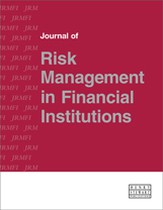Regress under stress: A simple least-squares method for integrating economic scenarios with risk simulations
Abstract
We present a simple and powerful approach to create meaningful stress scenarios for risk management and investment analysis of multi-asset portfolios, which effectively combines economic forecasts and ‘expert’ views with portfolio simulation methods. Expert scenarios are typically described in terms of a small number of key economic variables or factors. However, when applied to a portfolio, they are incomplete — they generally do not describe what occurs to all relevant market risk factors that affect the portfolio. We need to understand how these market risk factors behave, conditional on the outcome of the economic factors. The key insight to our approach is that the conditional expectation, and more generally the full conditional distribution of all the factors, and of the portfolio profit and loss (P&L), can be estimated directly from a pre-computed simulation using least squares regression. We refer to this approach as least squares stress testing (LSST). LSST is a simulation-based conditional scenario generation method that offers many advantages over more traditional analytical methods. Simulation techniques are simple, flexible and provide very transparent results, which are auditable and easy to explain. LSST can be applied to both market and credit risk stress testing with a large number of risk factors, which can follow completely general stochastic processes, with fat-tails, non-parametric and general co-dependence structures, autocorrelation, etc. LSST further produces explicit risk factor P&L contributions. We demonstrate the methodology in detail with the practical example of a multi-asset investment portfolio and economic scenarios from an industry report.
The full article is available to subscribers to the journal.
Author's Biography
Dan Rosen is Visiting Researcher and first Director of the Centre for Financial Industries at the Fields Institute, as well as an Adjunct Professor of Mathematical Finance at the University of Toronto. He was the co-founder and CEO of R2 Financial Technologies, acquired by S&P Capital IQ in 2012. Before founding R2 in 2006, Dr Rosen had a successful career over a decade at Algorithmics. He holds an MASc and PhD from the University of Toronto.
David Saunders is an Associate Professor in the Department of Statistics and Actuarial Science at the University of Waterloo. He is the author of many articles on the subjects of risk management, portfolio optimisation and derivatives pricing, and regularly serves as a consultant for financial institutions and software companies.
Citation
Rosen, Dan and Saunders, David (2016, October 1). Regress under stress: A simple least-squares method for integrating economic scenarios with risk simulations. In the Journal of Risk Management in Financial Institutions, Volume 9, Issue 4. https://doi.org/10.69554/LFNC1328.Publications LLP
